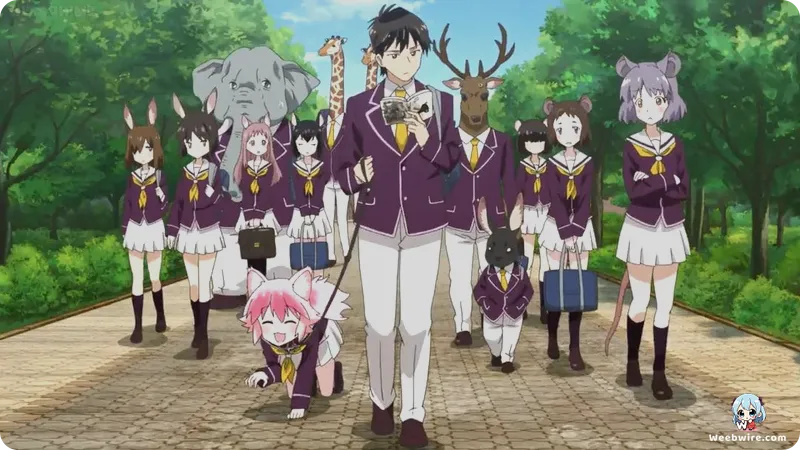Zoological Genius Hidden in Plain Sight: How Seton Academy: Join the Pack! Became an Unexpected Lesson in Biology

The 2020 series Seton Academy: Join the Pack! (Murenase! Seton Gakuen), produced by Studio Gokumi, quickly established itself as a unique entry in the romantic comedy genre. While the narrative initially captivates viewers through the chaotic high school life centered on the animal-averse human protagonist, Jin Mazama, and his interactions with various animal-hybrid classmates, the series possesses a surprising commitment to intellectual depth beneath its absurd surface. Beyond simple comedic or ecchi elements, Seton Academy expertly integrates genuine zoological and biological facts into its structure, creating a compelling dynamic between scientific accuracy and school-life mayhem. This dedication to factual detail is arguably the most significant, yet frequently overlooked, factor contributing to the show's sustained appeal.
The production team demonstrates an almost encyclopedic adherence to biological accuracy, which is seamlessly integrated throughout every episode. Authentic, real-world information concerning different species—including mating rituals, specific dietary requirements, and territorial instincts—is frequently presented. This information is often delivered through on-screen overlays, narrated segments, or character dialogue. Crucially, these facts are not merely decorative; they actively dictate character motivations, social hierarchies, and key plot developments. Much of the comedy arises from the conflict between verified animal behavior and the conventional setting of a modern high school. For instance, witnessing Ranka, the energetic main wolf girl, strictly follow authentic wolf social structures while navigating typical academic responsibilities perfectly illustrates the show’s distinctive approach.

The specificity employed in species selection further highlights the show's underlying rigor. Ranka, for example, is not presented as a generic wolf but is explicitly identified as a Japanese wolf (Canis lupus hodophilax). This seemingly minor detail carries significant emotional resonance, as the Japanese wolf is an extinct subspecies, subtly introducing a layer of melancholy and urgency to her character's fervent desire to establish a strong, stable pack community. Similarly, characters such as the volatile Tasmanian Devil are designed to reflect the genuine temperament and biological necessities of their real-life counterparts, underscoring the extensive research conducted by creator Bungo Yamashita and the animation team.
Adding another layer of distinctiveness is the strategic use of a recurring, often disembodied narrator. This voice frequently breaks the fourth wall, providing scientific explanations that function as an unexpected educational counterpoint to the surrounding chaos. Occasionally, this expository role is assumed by knowledgeable students, such as Ena, the stoic dinosaur girl who harbors skepticism toward humans. This pedagogical strategy suggests that the series was conceived not solely as entertainment, but also as an unconventional vehicle for educating audiences about the vast diversity of the animal kingdom—a notable rarity within mainstream anime comedy.
Even the human protagonist, Jin Mazama, carries thematic complexity. His intense aversion to animals drives the central conflict and much of the humor. However, his forced interactions with the animal student body facilitate a powerful, albeit subtle, commentary on dismantling prejudice and fostering acceptance across group differences. His status as one of only two humans (alongside Hitomi Hino) in an academy populated entirely by beasts emphasizes his outsider perspective, making his gradual, reluctant journey toward empathy profoundly impactful. The commitment to detail extended even to the voice acting, where performers were instructed to incorporate authentic animalistic vocalizations and species-specific speech rhythms—such as the slow, docile cadence of the sheep character, Mei—reinforcing Studio Gokumi’s meticulous fidelity to this intricate and educational premise.
Credits
Seton Academy: Join the Pack!
Author
Bungo Yamashita
Cover Art
Bungo Yamashita
Studio
Studio Gokumi
Publisher
Kodansha
Producers





